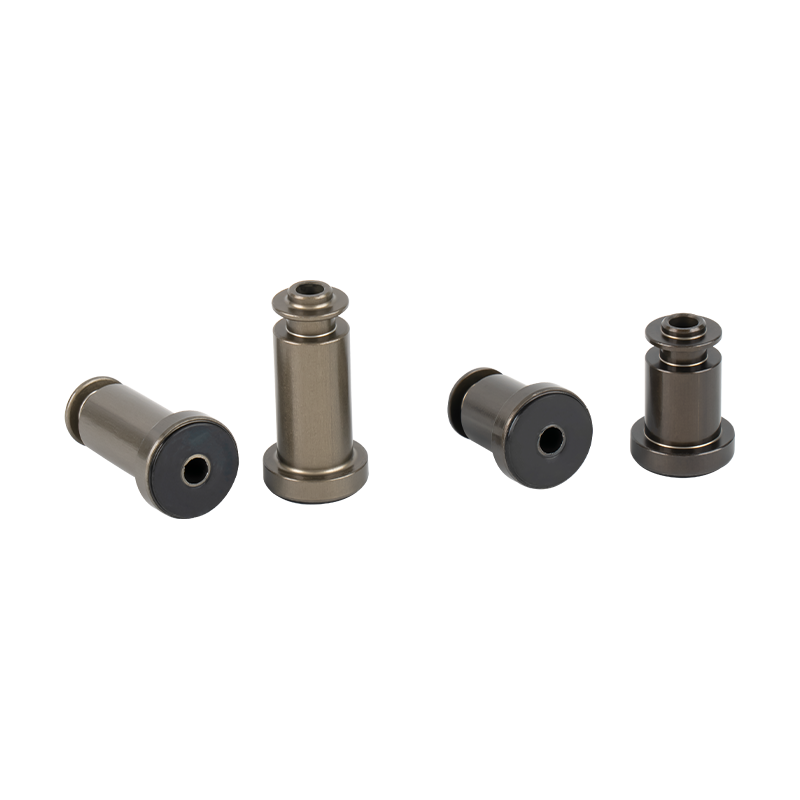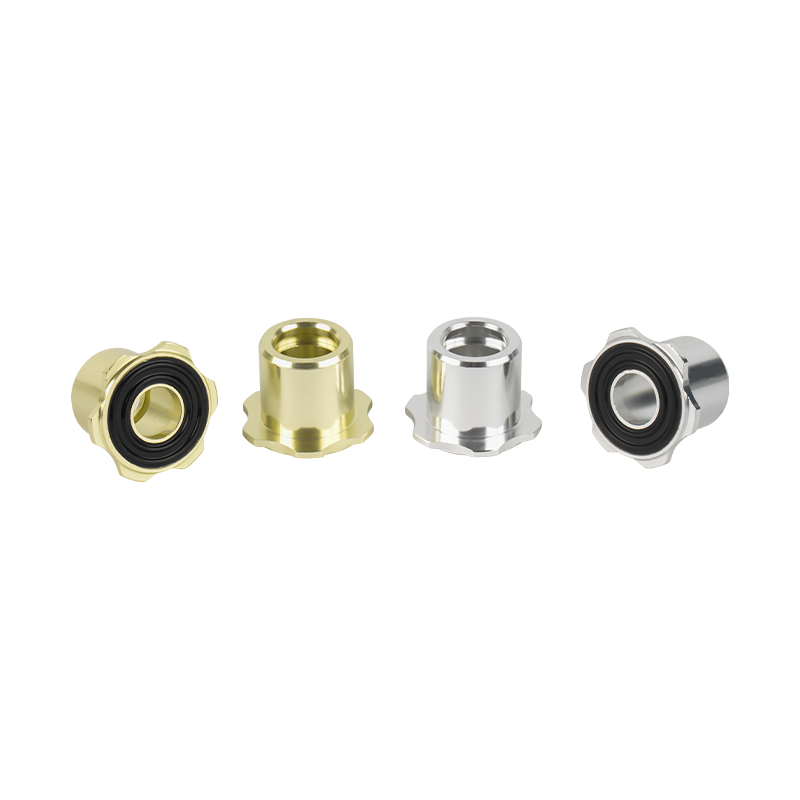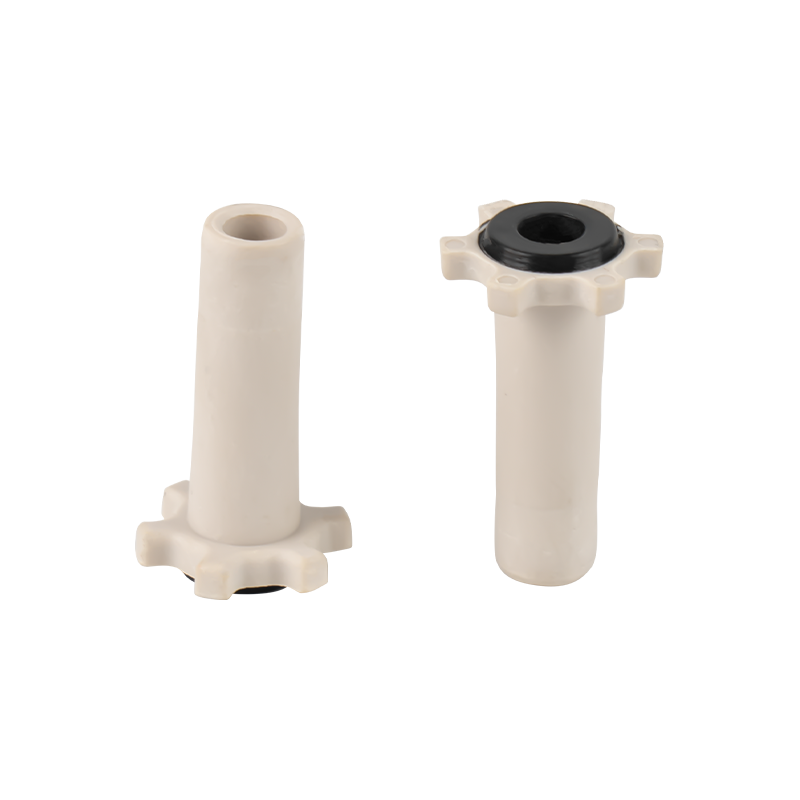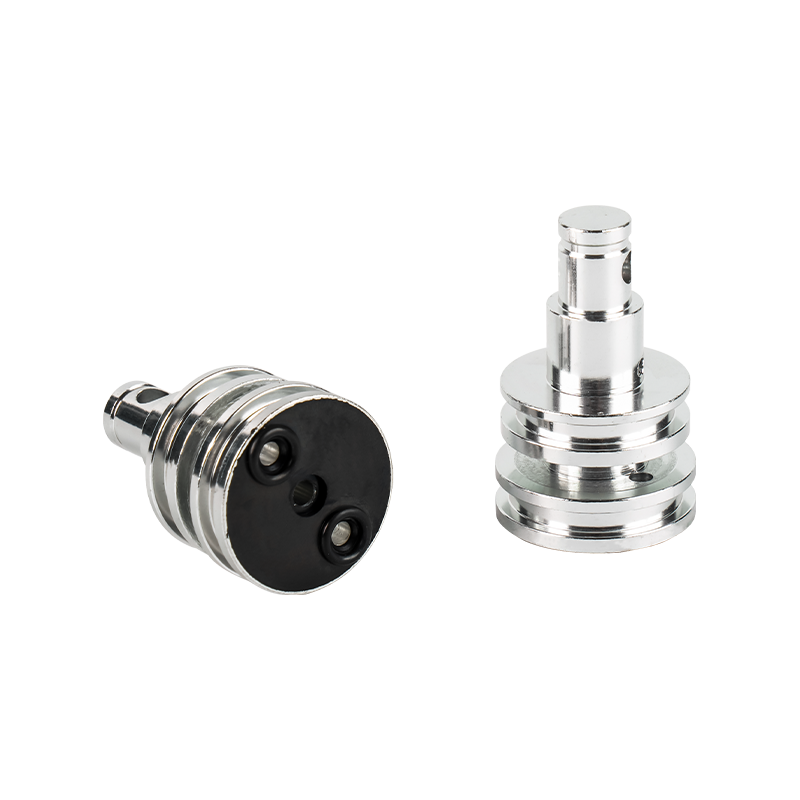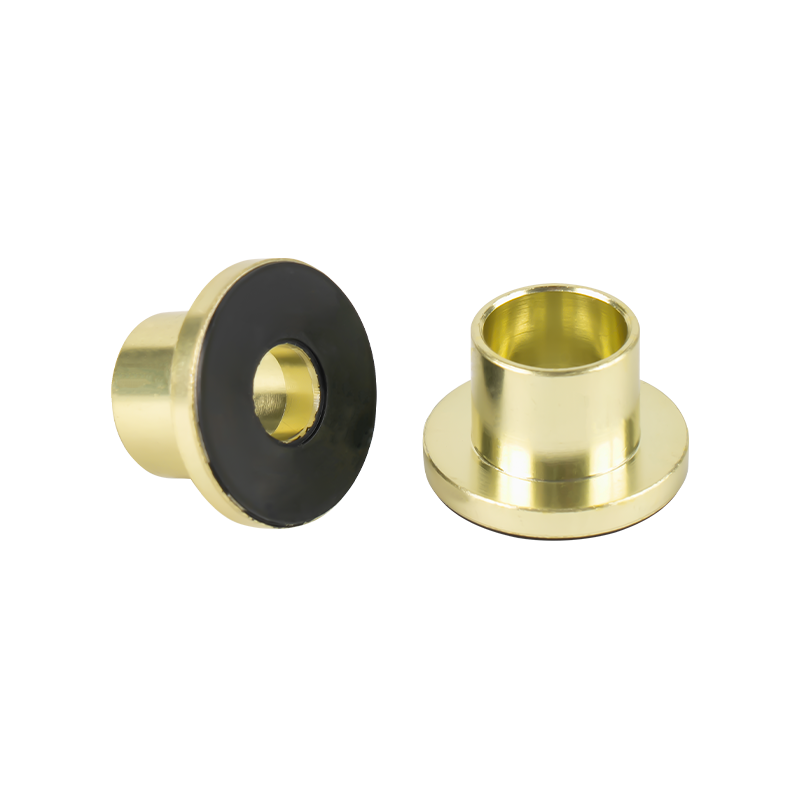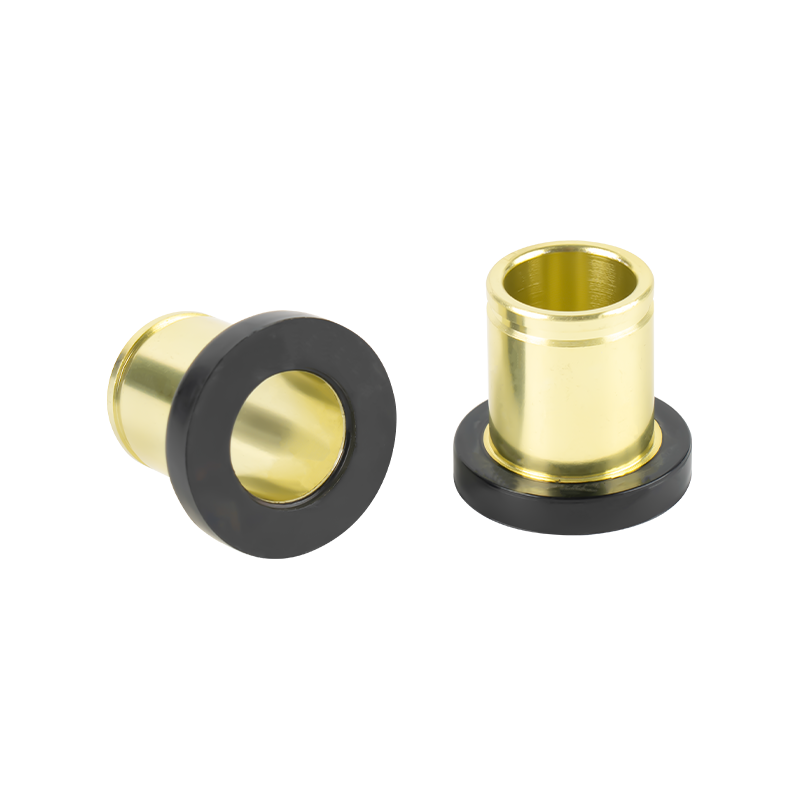Automobile Valve Cylinder Assembly: The Core Execution Unit of Engine Valve Train System
2025-08-14
Content
- 1 1. Composition and Technical Parameters of the Valve Cylinder Assembly
- 2 2. Working Mechanism and Dynamic Characteristics of the Valve Cylinder Assembly
- 3 3.Performance Indicators and Influencing Factors of the Valve Cylinder Assembly
- 4 4. Technical Differences of Valve Cylinder Assemblies for Different Vehicle Types
- 5 5. Technical Development Trends of Valve Cylinder Assemblies
- 6 6. Precautions for Using Valve Cylinder Assemblies
- 7 7. Key Points for Selecting Valve Cylinder Assemblies
1. Composition and Technical Parameters of the Valve Cylinder Assembly
As a core part of the engine, the Automobile Valve Cylinder Assembly’s precision directly determines the engine’s overall performance, including power, fuel efficiency, and durability.
(1) Valve Components
The Automobile Valve Cylinder assembly is a key executive component for controlling cylinder intake and exhaust, consisting of multiple precision parts such as valves, valve guides, valve seats, and valve springs.
As the core part, the valve is usually made of heat-resistant alloy materials such as 21-4N austenitic steel through precision forging. The cone angle of its head is commonly 30° or 45°. This specific angle is designed to form an efficient line-sealing structure with the valve seat. The width of the sealing belt is strictly controlled within the range of 1.2-2.0mm to ensure that the cylinder compression pressure loss is maintained at an extremely low level, generally requiring ≤3%/min. This is because during the operation of the engine, if a large amount of high-pressure gas in the cylinder leaks, it will seriously affect the engine's power output and fuel economy. For example, in a 2.0L naturally aspirated engine, when the width of the valve sealing belt exceeds the standard range by 0.5mm, the power output of the engine under full load conditions decreases by about 8%, and fuel consumption increases by about 10%.
Valve guides are mostly made of powder metallurgy materials with an oil content of ≥15%, which helps maintain good lubrication conditions. The valve guide is precisely press-fitted into the cylinder head guide hole, and the fit clearance between the inner hole and the valve stem is strictly limited to 0.05-0.12mm. Such precise fit clearance can ensure the guiding accuracy of the valve during high-speed reciprocating motion and prevent the valve from deflection. At the same time, the radial runout of the valve guide is required to be ≤0.03mm/m, which is crucial for ensuring the correct fit between the valve and the valve seat. In practical applications, if the radial runout of the valve guide exceeds the standard, it may lead to increased local wear between the valve and the valve seat, thereby affecting the sealing performance of the valve. For example, after an engine has been running for 100,000 kilometers, due to the excessive radial runout of the valve guide by 0.05mm/m, the valve sealing becomes poor, resulting in difficulties in engine starting and a decrease in power.
Valve seats are generally produced by centrifugal casting of high-chromium cast iron (Cr25) with a hardness of ≥HRC38. To further improve its wear resistance, the valve seat undergoes medium-frequency induction hardening to form a 5-8mm hardened layer. During installation, the valve seat and the cylinder head adopt an interference fit with an interference amount controlled at 0.03-0.07mm to ensure that it does not loosen under the high-temperature and high-pressure working environment of the engine. The operating temperature range of the valve seat is -40℃ to 650℃. This is because the combustion chamber temperature of the engine changes significantly under different working conditions, and the valve seat must have good thermal stability to work reliably. In cold regions, the valve seat must withstand the test of low-temperature environment when the engine is started initially; while when the engine is running under high load, it must withstand high temperatures above 600℃.
Valve springs are made of silicon-manganese spring steel (60Si2MnA) through cold coiling forming process. The free length tolerance is controlled within ±0.5mm, the permanent deformation after setting treatment is ≤2%, and the working load deviation is ≤3%. These strict technical indicators aim to ensure that the valve spring can stably provide sufficient closing force for the valve during the entire working cycle of the engine, ensuring that the sealing specific pressure when the valve is closed is ≥0.3MPa. If the working load deviation of the valve spring is too large, it may cause the valve to close tightly, leading to engine air leakage, power reduction and other problems. For example, in the durability test of a turbocharged engine, due to the valve spring working load deviation exceeding the standard by 5%, multiple cylinder air leakage occurred after 500 hours of operation.
(2) Valve Transmission Components
The valve transmission component is responsible for accurately transmitting the camshaft motion to the valve, mainly including the camshaft, tappet, push rod and rocker arm mechanism—all critical to the Automobile Valve Cylinder Assembly’s functionality.
As the core driving component of the valve transmission assembly, the camshaft is usually cast from alloy cast iron (HT300) or ductile iron (QT800-2). The cam profile needs to undergo precision grinding, with a lift error of ≤0.02mm and a surface roughness of Ra ≤0.8μm. The fit clearance between the journal and the bearing is controlled at 0.04-0.08mm. The precise control of this clearance is important for ensuring the smooth rotation of the camshaft and reducing wear. The phase accuracy of the camshaft directly affects the valve timing of the engine, and thus the performance of the engine. For every 1°CA increase in camshaft phase error, engine power decreases by approximately 1.5%. For example, in the development of a high-performance engine, by optimizing the camshaft manufacturing process, the camshaft phase error is controlled within ±0.5°CA, and the maximum power of the engine is increased by about 5%.
The tappet plays a role in transmitting force and adjusting valve clearance in the valve transmission assembly. The hydraulic tappet has a built-in check valve structure, and the oil chamber volume is generally 3-5ml. The fit clearance between the plunger and the cylinder block is 0.015-0.03mm. Through this precise fit, the hydraulic tappet can automatically compensate for the valve clearance, ensuring that the valve overlap angle error is ≤1°CA. During the actual operation of the engine, the valve clearance will gradually change due to factors such as wear of the valve and valve seat. The application of hydraulic tappets can effectively avoid valve abnormal noise, poor sealing and other problems caused by changes in valve clearance. For example, in an engine using hydraulic tappets, after 150,000 kilometers of operation, the valve clearance remains within a reasonable range, and the engine works stably.
The rocker arm mechanism is made of forged steel (40Cr) through quenching and tempering treatment, and the rocker arm ratio is designed between 1.2-1.8. This range of rocker arm ratios is obtained through a large number of theoretical calculations and experimental verifications based on the performance requirements of the engine. It can ensure the normal opening and closing of the valve while achieving reasonable amplification and direction conversion of force. The fit clearance between the bushing and the rocker arm shaft is 0.02-0.05mm, and the end runout during operation is ≤0.05mm. If the fit clearance of the rocker arm mechanism is unreasonable or the end runout is too large, it will lead to poor contact between the rocker arm and the valve stem, accelerate component wear, and even cause valve failure. For example, in a maintenance case of an engine, due to the wear of the rocker arm bushing, the fit clearance increased to 0.1mm, and the engine had severe valve knocking during operation, and the power also decreased significantly.
2. Working Mechanism and Dynamic Characteristics of the Valve Cylinder Assembly
The power transmission chain of the Automobile Valve Cylinder Assembly is a closed-loop system that converts rotational motion into linear motion, ensuring the valve opens and closes in strict accordance with engine timing.
During the operation of the internal combustion engine, the Automobile Valve Cylinder Assembly realizes intake and exhaust control in an orderly manner following a rigorous sequence.
(1) Power Transmission Chain
The crankshaft drives the camshaft to rotate through the timing gear pair, and the transmission ratio of the timing gear pair is usually 2:1. This transmission ratio is designed based on the working cycle requirements of the engine to ensure that the speed of the camshaft is half of the crankshaft speed, so as to achieve precise valve timing control. The cam lift curve on the camshaft precisely pushes the tappet to make linear reciprocating motion. The tappet transmits the received motion to the rocker arm through the push rod, and the rocker arm rotates around the fulcrum. In this process, it realizes the amplification and direction conversion of force, and finally transmits the motion to the valve to control the opening and closing of the valve. In this power transmission chain, a fault in any link may cause abnormal valve action and affect the normal operation of the engine. For example, when the tooth surface of the timing gear pair is worn, it may cause tooth jumping during gear transmission, which in turn makes the speed of the camshaft lose synchronization with the crankshaft speed, leading to engine valve timing disorder.
(2) Valve Motion Law
Based on the carefully designed cam profile, the maximum acceleration of the valve during the opening process is limited to ≤8000m/s². This acceleration limit is intended to avoid impact due to excessive inertial force during the high-speed opening of the valve, which may damage the valve and related components. In the closing phase, the valve spring provides the reset force to quickly pull the valve back to the closed position, and the valve seating speed is controlled at 0.5-1.2m/s to avoid excessive impact noise. If the valve seating speed is too fast, it will not only accelerate the wear of the valve and valve seat but also damage the valve sealing surface, affecting the sealing performance of the engine. For example, in the bench test of a certain engine, by optimizing the cam profile and valve spring parameters, the valve seating speed was reduced from 1.5m/s to 1.0m/s, the valve knocking noise of the engine was reduced by 5dB(A), and the service life of the valve was extended by about 20%.
(3) Valve Timing Control
The intake valve usually opens 10°-30°CA before top dead center and closes 40°-70°CA after bottom dead center; the exhaust valve opens 40°-60°CA before bottom dead center and closes 10°-30°CA after top dead center, and the valve overlap angle range is generally 20°-60°CA. These valve timing parameters are not fixed but are optimally matched according to the engine's operating conditions, such as speed and load. Under low engine speed and high load conditions, appropriately increasing the advance opening angle and delayed closing angle of the intake valve can increase the intake volume and improve the engine's torque output; while under high-speed conditions, it is necessary to optimize the opening time of the exhaust valve to ensure that exhaust gas can be discharged in time and improve the engine's volumetric efficiency. For example, after a turbocharged engine adopts variable valve timing technology, the torque is increased by about 15% under the low-speed condition of 2000r/min; the power is increased by about 8% under the high-speed condition of 6000r/min.
3.Performance Indicators and Influencing Factors of the Valve Cylinder Assembly
To ensure the Automobile Valve Cylinder Assembly meets design requirements, a series of performance indicators are established, covering efficiency, sealing, and durability.
(1) Core Performance Parameters
|
Performance Parameter |
Test Method |
Index Requirement |
Impact of Exceeding Standard |
|
Intake Charging Efficiency |
Airway Test Bench |
≥0.85 at Rated Speed |
Power reduction, increased fuel consumption |
|
Exhaust Resistance |
Airway Test Bench |
≤3kPa |
Increased pumping loss, reduced engine efficiency |
|
Sealing Performance |
Air Pressure Leakage Test |
≤0.5% of Cylinder Volume per Minute at 0.3MPa |
Power reduction by 10%-15%, fuel consumption increase by 15%-20% |
|
Durability |
Full-Load Bench Test |
Valve Wear ≤0.05mm, Spring Free Length Attenuation ≤1% after 1000 Hours |
Shortened service life, increased failure rate |
Intake and Exhaust Efficiency: Intake and exhaust efficiency is one of the important indicators to measure the performance of the Automobile Valve Cylinder Assembly, which is usually tested through an airway test bench. At the rated speed, the intake charging efficiency is required to be ≥0.85, which means that the engine can efficiently inhale fresh air to provide a guarantee for the full combustion of fuel. At the same time, the exhaust resistance should be ≤3kPa, and the flow loss coefficient should be controlled within 0.15. Lower exhaust resistance and flow loss coefficient help the smooth discharge of exhaust gas, reduce the pumping loss of the engine, and improve the thermal efficiency of the engine. For example, by optimizing the design of the intake and exhaust ports, an engine increased the intake charging efficiency from 0.8 to 0.88, reduced the exhaust resistance from 4kPa to 2.5kPa, and improved the fuel economy of the engine by about 6%.
Sealing Performance: Sealing performance is directly related to the engine's power output and fuel economy. Using the air pressure leakage test method, under a test pressure of 0.3MPa, the leakage per minute is required to be ≤0.5% of the cylinder volume. If the sealing performance of the Automobile Valve Cylinder Assembly is poor, the high-pressure gas in the cylinder will leak, resulting in a decrease in engine power and an increase in fuel consumption.
Durability: Durability is a key indicator to evaluate the reliability of the Automobile Valve Cylinder Assembly. Verified by bench tests, after 1000 hours of cumulative operation under full load conditions, the valve wear is ≤0.05mm, and the free length attenuation of the spring is ≤1%. This requires that all parts of the Automobile Valve Cylinder Assembly can maintain good performance in the long-term high-temperature, high-pressure, and high-load working environment. In actual use, the engine may need to run continuously for a long time, such as commercial vehicles during long-distance transportation. Therefore, the durability of the Automobile Valve Cylinder Assembly is crucial. For example, after a 1000-hour full-load bench test, an engine had a valve wear of only 0.03mm and a spring free length attenuation of 0.8%, indicating that the assembly has good durability and can meet actual use requirements.
(2) Analysis of Influencing Factors
Material Properties: Material properties play a decisive role in the performance of the Automobile Valve Cylinder Assembly. The high-temperature strength of the valve material, such as σb ≥600MPa at 600℃, directly affects its creep resistance. When the engine is running under high load, the valve head bears extremely high temperature and pressure. If the high-temperature strength of the material is insufficient, the valve is prone to deformation, resulting in poor sealing. The fatigue life of the valve spring is required to be 10⁷ cycles without fracture, which determines the service life of the assembly. If the fatigue life of the spring is insufficient, the spring may break during long-term operation of the engine, causing serious engine failures. For example, in a high-performance engine, a new high-temperature alloy material is used to make the valve, and its high-temperature strength at 600℃ is increased by 20%, which effectively improves the creep resistance of the valve and prolongs the service life of the valve.
Manufacturing Accuracy: Manufacturing accuracy is a key factor to ensure the performance of the Automobile Valve Cylinder Assembly. For every 1°CA increase in camshaft phase error, the engine power decreases by about 1.5%, which fully illustrates the importance of camshaft phase accuracy. An excessive coaxiality of the valve guide by 0.05mm will increase the valve eccentric wear rate by 30%, seriously affecting the service life of the valve. In the production process, it is necessary to ensure that the manufacturing accuracy of each part meets the design requirements through high-precision processing equipment and strict quality control systems. For example, an engine manufacturer introduced advanced CNC machine tools and high-precision measuring equipment to control the camshaft phase error within ±0.3°CA and the valve guide coaxiality error within 0.02mm, significantly improving the performance and reliability of the engine.
Lubrication Conditions: Lubrication conditions are crucial for the normal operation of the Automobile Valve Cylinder Assembly. The oil film thickness in the contact area between the tappet and the cam needs to be maintained at 5-10μm to reduce friction and wear between parts. When the oil film breaks, the contact stress will increase sharply, up to 1500MPa, which is very easy to cause adhesive wear. To ensure good lubrication conditions, it is necessary to select appropriate lubricating oil products and ensure that the engine's lubrication system works normally. For example, in some high-performance engines, a specially designed lubrication system is adopted. By optimizing the oil circuit layout and adding lubricating oil injection devices, sufficient lubrication of key parts such as tappets and cams is ensured, and the wear of parts is effectively reduced.
4. Technical Differences of Valve Cylinder Assemblies for Different Vehicle Types
The design of the Automobile Valve Cylinder Assembly varies significantly across vehicle types, as it must adapt to different operating conditions and performance demands.
|
Vehicle Type |
Valve Material |
Camshaft Follower Type |
Maximum Valve Lift (mm) |
Focus Performance Indicator |
|
Passenger Car |
21-4N Austenitic Steel |
Sliding Follower |
8-10 |
Balance of low-speed torque and high-speed power, idle noise ≤65dB(A) |
|
Commercial Vehicle |
Bimetallic Structure (Exhaust Valve with Stellite Alloy Overlay Welding) |
Sliding Follower |
10-12 |
B10 life ≥1 million kilometers, high-temperature corrosion resistance |
|
Racing Car |
Titanium Alloy (Ti-6Al-4V) |
Roller Follower |
12-15 |
Maximum speed ≥15000r/min, valve mechanism resonance frequency ≥200Hz |
(1) Components for Passenger Cars
Technical Features: To meet diverse driving needs, passenger cars usually adopt a double overhead camshaft (DOHC) structure. This structure can achieve independent and precise control of intake and exhaust valves within the Automobile Valve Cylinder Assembly. Each cylinder is equipped with 4-5 valves, and the ratio of valve diameter to cylinder diameter is generally 0.28-0.32. By reasonably designing the number and diameter of valves, while ensuring sufficient intake and exhaust flow area, the weight of the valve assembly is reduced as much as possible, and the response speed of the valve is improved. The valve timing can be adjusted by ±30°CA through the VVT (Variable Valve Timing) system, which can adjust the opening and closing time of the valve in real-time according to different working conditions of the engine to optimize the engine's performance. For example, in urban congested road conditions, the VVT system appropriately delays the closing time of the intake valve to improve the idle stability and fuel economy of the engine; when power is needed during high-speed driving, the opening time of the intake valve is advanced to increase the intake volume and improve the engine's power output.
Performance Focus: Passenger cars focus on the balance between low-speed torque improvement and high-speed power output in terms of performance. Under the low-speed condition of 2000r/min, the torque reserve coefficient is required to be ≥1.2 to ensure that the vehicle has good power performance in low-speed driving scenarios such as starting and acceleration. At the high-speed condition of 6000r/min, the intake efficiency needs to be ≥0.8 to ensure that the engine can fully intake air when running at high speed and output sufficient power. At the same time, to provide a comfortable driving environment, the idle noise is required to be ≤65dB(A). The noise of the engine at idle is effectively reduced by optimizing the structural design of the Automobile Valve Cylinder Assembly and using advanced sound insulation materials.
(2) Components for Commercial Vehicles
Technical Features: Commercial vehicles have more severe engine operating conditions due to the need to undertake heavy transportation tasks. Therefore, a push-rod valve train is often used in their Automobile Valve Cylinder Assembly, which has high reliability and durability. The valve diameter is generally ≥12mm to meet the needs of large intake and exhaust volumes. The valve spring adopts a double spring structure with an inner-outer diameter ratio of 0.6-0.7. This design can effectively improve the anti-resonance ability of the valve spring, which is about 40% higher than that of the single spring structure. The exhaust valve adopts a bimetallic structure with Stellite alloy welded on the head, which enhances the high-temperature corrosion resistance of the exhaust valve and enables it to work stably for a long time in the high-temperature and high-pressure exhaust environment.
Performance Focus: Commercial vehicles attach great importance to durability under full load conditions in terms of performance, and their B10 life is required to be ≥1 million kilometers. This means that among a large number of vehicle samples, 90% of the vehicles can still have their engine Automobile Valve Cylinder Assembly work normally after driving 1 million kilometers. To achieve this goal, commercial vehicle engines use high-strength materials, optimize structural design, and conduct strict durability test verification during the design and manufacturing process. For example, by optimizing the material and heat treatment process of the valve seat, its wear resistance is improved; the surface of the camshaft is specially treated to reduce wear.
(3) Components for Racing Cars
Technical Features: Racing cars pursue extreme performance, so a series of advanced technologies are adopted in their Automobile Valve Cylinder Assembly. The valve material is titanium alloy (Ti-6Al-4V). Compared with traditional valve materials, the specific strength of titanium alloy is increased by 50%, which makes the valve significantly reduce weight while ensuring strength, which is beneficial to improve the response speed of the valve and the engine speed. The camshaft adopts roller followers with a friction coefficient reduced to 0.08, which greatly reduces friction loss and improves energy transfer efficiency compared with traditional sliding followers. The valve timing response speed is increased by 20%, which can more quickly adjust the valve opening and closing time according to the engine working conditions, meeting the extreme requirements for power output of racing cars under different tracks and driving conditions. In addition, the valve lift of racing cars is designed to be large, reaching 12-15mm, to achieve a large amount of intake and exhaust in a very short time, providing sufficient air for the engine's violent combustion and ensuring that the engine can output extremely high power in an instant.
Performance Focus: Racing cars focus on high-speed adaptability and instantaneous power output in terms of performance. The maximum speed is required to be ≥15000r/min, which requires the Automobile Valve Cylinder Assembly to have extremely high rigidity and precision to withstand the huge inertial force generated at high speeds. The resonance frequency of the valve mechanism is ≥200Hz to avoid resonance under high-speed operation, which may cause valve bounce and affect the engine's performance. In addition, racing cars also require the Automobile Valve Cylinder Assembly to have extremely fast response speed to quickly adjust the valve timing according to the driver's operation, such as accelerating overtaking and decelerating into corners, so as to achieve the best power output in different driving states.
5. Technical Development Trends of Valve Cylinder Assemblies
With the advancement of automotive technology, the Automobile Valve Cylinder Assembly is evolving toward higher precision, intelligence, and material innovation.
(1) Upgrading of Variable Valve Technology
The electromagnetic valve control (EMV) system realizes continuous adjustment of valve lift from 0-10mm with a response time of ≤1ms, which can reduce pumping loss by more than 30%.
The camless technology (CAV) directly controls the valve through an electro-hydraulic drive unit, expanding the flexible adjustment range of valve timing to 120°CA, meeting the requirements of the National VII emission regulations.
(2) Innovation in Materials and Processes
The application of additive manufacturing technology to produce integrated valve components realizes topology optimization design, reducing weight by 25% and improving fatigue strength by 15%.
The valve stem is treated with diamond-like carbon (DLC) coating, with a surface hardness of over HV2000, a friction coefficient reduced to 0.05, and a wear rate reduced by 60%.
(3) Intelligent Monitoring and Diagnosis
A micro pressure sensor (accuracy ±0.2kPa) is implanted to monitor the valve sealing state in real-time, and fault early warning is realized through the edge computing unit with an accuracy of ≥95%.
A valve motion simulation model is built based on digital twin technology, extending the predictive maintenance cycle to 80,000 kilometers and reducing maintenance costs by 40%.
6. Precautions for Using Valve Cylinder Assemblies
Proper use and maintenance of the Automobile Valve Cylinder Assembly are key to extending its service life and maintaining engine performance.
Regular Inspection and Maintenance
Valve clearance inspection should be conducted every 20,000 kilometers as part of routine maintenance, but additional checks are recommended if abnormal engine noise (such as ticking or knocking from the valve train) is detected. Use a calibrated feeler gauge to measure cold clearance—defined as the gap between the valve stem and rocker arm (or tappet) when the engine is fully cooled (ambient temperature, typically 20-25°C). For most gasoline engines, the standard cold clearance ranges from 0.20-0.25mm for intake valves and 0.25-0.30mm for exhaust valves, though diesel engines may require slightly larger clearances (0.30-0.35mm for exhaust valves) due to higher combustion pressures.
If clearance deviates by more than 0.05mm from the manufacturer’s specification, calibration is necessary:
- For mechanical tappet systems, adjust via the rocker arm’s adjusting screw, locking the nut with a torque wrench to 15-20 N·m after setting.
- For hydraulic tappets, replace worn units if they fail to auto-compensate (indicated by persistent noise after engine warm-up), as degraded internal check valves or oil leakage can disrupt clearance regulation.
Neglecting clearance issues can lead to valve timing errors, reduced compression pressure, or excessive wear on valve seats and stems—ultimately causing power loss or valve burning.
Avoid Extreme Operating Conditions
Engine startup requires careful handling to protect valve components. After a cold start, idle for 3-5 minutes to allow gradual warming: this ensures the valve stem, guide, and seat expand uniformly, reducing metal-to-metal impact during initial operation. Rushing to apply load (e.g., accelerating immediately) when the engine is cold (coolant temperature below 60°C) can cause uneven thermal stress, leading to valve warping or premature seat wear.
Prolonged overspeed operation—defined as exceeding 10% of the rated maximum Speed (e.g., over 6,600 rpm for a 6,000 rpm-rated engine)—is strictly prohibited. At high speeds, valve springs endure cyclic loads beyond their design limits, increasing the risk of fatigue failure (manifested as sudden loss of valve closure force). Additionally, elevated rotational speeds amplify inertial forces on the valve train, potentially causing "valve float" (failure to close fully), which disrupts combustion and can result in piston-to-valve contact—catastrophic damage to both components.
Selection of Lubricating Oil Products
The valve train’s lubrication depends on high-quality engine oil meeting API SN or newer specifications (e.g., API SP), which offer enhanced anti-wear additives (such as zinc dialkyldithiophosphate, ZDDP) to protect camshaft lobes and tappet surfaces. Viscosity grade must align with ambient conditions:
- 5W-30 is suitable for temperate climates (-20°C to 40°C), providing sufficient flow at low temperatures to lubricate the valve train during cold starts while maintaining film strength at operating temperatures (90-110°C).
- In extreme cold (-30°C or lower), 0W-30 oil ensures pumpability, preventing dry starts that accelerate camshaft and tappet wear.
- For high-performance engines operating at sustained high loads (e.g., towing or racing), 10W-40 oil may be recommended to resist viscosity breakdown under thermal stress.
Oil filters should be replaced with OEM-spec or equivalent units (with filtration efficiency ≥95% for particles ≥20μm) at every oil change to prevent debris from clogging oil passages—particularly critical for hydraulic tappets, whose small internal oil galleries (1-2mm diameter) are prone to blockage, leading to stuck valves or noisy operation.
Maintenance of Cooling System
A properly functioning cooling system is vital to prevent thermal damage to valve components, which operate in environments exceeding 600°C at the valve head. Key checks include:
- Coolant level: Maintain between the MAX and MIN marks on the expansion tank; top up with the manufacturer-specified coolant (typically ethylene glycol-based with corrosion inhibitors) to avoid dilution of additives.
- Coolant properties: Test freezing point quarterly (should remain ≤-35°C) and boiling point (≥108°C under pressure) using a refractometer or boiling point tester. Degraded coolant (over 2 years old) loses corrosion resistance, risking scale buildup in the cylinder head water jacket—impairing heat transfer and causing localized hotspots near exhaust valves.
Engine overheating (coolant temperature exceeding 105°C) must be addressed immediately. Sustained high temperatures reduce the tensile strength of valve materials (e.g., 21-4N steel loses ~30% strength at 650°C vs. 20°C), increasing the risk of valve stem bending or head deformation. This compromises sealing, leading to exhaust gas recirculation into the intake manifold or coolant leakage into the combustion chamber—both of which accelerate valve train wear.
In summary, proactive maintenance and adherence to operational guidelines are critical to preserving the integrity of the valve cylinder assembly, ensuring long-term reliability and performance.
7. Key Points for Selecting Valve Cylinder Assemblies
Selecting a suitable Automobile Valve Cylinder Assembly requires comprehensive consideration of engine parameters, usage scenarios, and quality standards.
Matching Engine Model
Selecting a Automobile Valve Cylinder Assembly that aligns with the engine’s specific parameters is foundational to ensuring optimal performance and avoiding mechanical interference. Engine displacement, cylinder bore, stroke, and compression ratio directly dictate the required valve size, lift, and material strength. For instance:
- A 1.5L four-cylinder gasoline engine with a bore of 75-80mm typically requires intake valves with a diameter of 32-35mm and exhaust valves of 28-30mm to balance airflow and combustion efficiency. Larger bores (e.g., 85mm in a 2.0L engine) may demand intake valves up to 38mm to maximize air intake.
- Diesel engines, with higher compression ratios (16:1 to 22:1), require valves and seats with enhanced heat resistance (e.g., exhaust valves with 21-4N steel or Nimonic alloys) to withstand cylinder pressures exceeding 20MPa.
Beyond dimensions, verifying the manufacturer’s part number is critical. Even within the same engine family, variations in camshaft profiles (e.g., torque-optimized vs. power-optimized) or valve timing systems (e.g., single vs. dual VVT) can necessitate distinct valve assemblies. Mismatched components may lead to valve-piston interference at top dead center, valve spring overload, or incomplete sealing—all of which risk catastrophic engine failure.
Consider Usage Scenarios
The operational demands of the vehicle dictate specific features in the Automobile Valve Cylinder Assembly. Tailoring the selection to usage patterns ensures longevity and performance:
Urban commuter vehicles (frequent stop-and-go, low-speed operation): Prioritize assemblies with Variable Valve Timing (VVT) systems, which adjust intake/exhaust timing dynamically. For example, at idle (800-1,000 rpm), VVT can delay intake valve closure to reduce pumping losses, improving fuel economy by 5-8%. At low speeds (1,500-2,500 rpm), advancing intake timing enhances torque delivery, reducing the need for frequent downshifting.
Highway or performance-oriented vehicles (sustained high speeds, rapid acceleration): Opt for high-flow valve designs with streamlined profiles (e.g., parabolic valve heads) and polished valve stems to minimize airflow resistance. An air passage flow coefficient ≥0.35 ensures efficient gas exchange at 5,000-6,000 rpm, where engine power peaks. Additionally, lightweight valves (e.g., titanium alloy for racing applications) reduce inertial forces, allowing higher rev limits without valve float.
Off-road or heavy-duty vehicles (rough terrain, heavy loads): Reinforced valve springs with a 15-20% higher working load (e.g., 800N vs. 650N for standard springs) are essential to resist valve bounce during severe vibrations. Dual-spring configurations (inner spring for resonance damping, outer spring for load bearing) further enhance stability, while stellite-faced exhaust valves withstand the elevated temperatures from prolonged low-speed, high-torque operation.
Verify Quality Certification
Reliable Automobile Valve Cylinder Assembly must meet stringent industry standards to ensure durability and consistency. Key certifications and quality checks include:
ISO/TS 16949 certification: This automotive-specific quality management system ensures components are produced with rigorous process controls, from material sourcing to final inspection. It guarantees uniformity in critical parameters like valve stem straightness (≤0.03mm/m) and spring load tolerance (±3%).
Material and surface treatment validation: Check for specifications such as valve stem chrome plating (thickness ≥0.01mm) to reduce friction with guides, or DLC (diamond-like carbon) coatings (hardness ≥HV2000) for racing applications. Exhaust valve seats should feature a 5-8mm induction-hardened layer (HRC ≥38) to resist wear from hot exhaust gases.
Performance testing reports: For commercial vehicle assemblies, demand documentation of 1,000-hour full-load bench tests, which simulate 100,000+ kilometers of heavy-duty use. These tests validate that valve wear remains ≤0.05mm, spring free length decay is ≤1%, and sealing performance (leakage ≤0.5% of cylinder volume/min at 0.3MPa) is maintained. For passenger vehicles, 500-hour cyclic tests (alternating idle, low, and high loads) ensure reliability under varying conditions.
Cost-Effectiveness Evaluation
Balancing upfront cost with long-term value is critical when selecting a Automobile Valve Cylinder Assembly. While premium components may have higher initial prices, their durability and performance benefits often offset the investment:
Titanium alloy valves: Though 3-5 times more expensive than steel valves, their 40-50% weight reduction reduces camshaft and spring stress, extending component life by 30-40%. The resulting fuel economy improvement (3-5%) typically recoups the cost within 30,000-50,000 kilometers for high-mileage vehicles (e.g., taxis, delivery vans).
Aftermarket vs. OEM assemblies: OEM parts guarantee precise fit and material quality but may cost 20-30% more than reputable aftermarket options. However, low-cost generic assemblies often lack proper heat treatment or dimensional accuracy—leading to premature failure (e.g., valve breakage, seat warping) that incurs higher repair costs.
Lifecycle analysis: For commercial vehicles, a durable assembly with a B10 life of 1 million kilometers (vs. 600,000 km for budget options) reduces downtime and replacement frequency, lowering total cost of ownership by 15-20% over the vehicle’s lifespan.
As a key technical carrier for improving the thermal efficiency of internal combustion engines, the development level of Automobile Valve Cylinder Assembly directly reflects the technical level of automotive power systems. With the rise of new energy technologies, this component retains its relevance: in hybrid systems, it enables seamless transitions between electric and combustion modes by adjusting valve timing to optimize efficiency. In emerging hydrogen internal combustion engines, Automobile Valve Cylinder Assembly face unique challenges—such as hydrogen’s high flame speed and potential for pre-ignition—demanding new materials (e.g., heat-resistant alloys for valves) and tighter sealing (leakage ≤0.1% to prevent hydrogen embrittlement). These demands will drive ongoing innovation in materials science, design, and manufacturing, ensuring Automobile Valve Cylinder Assembly remain integral to next-generation powertrains.

 English
English русский
русский 中文简体
中文简体


